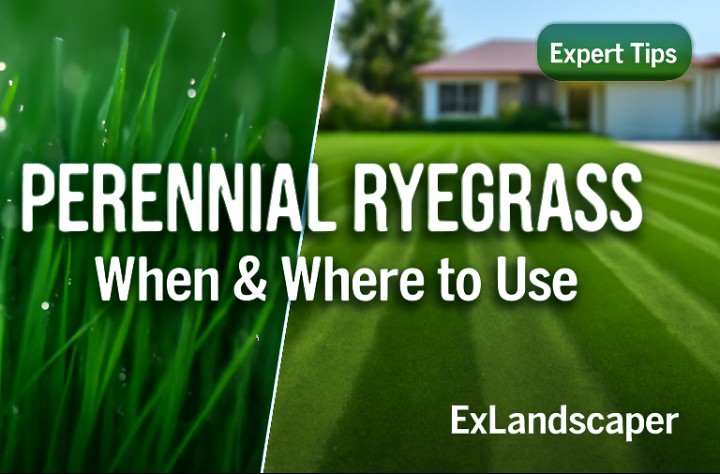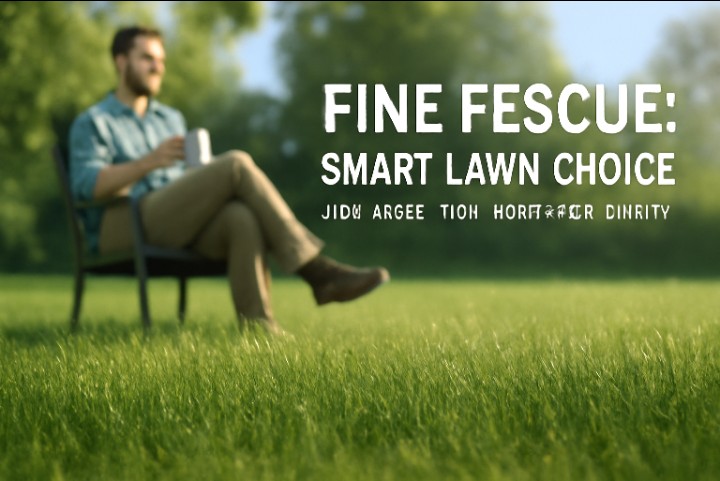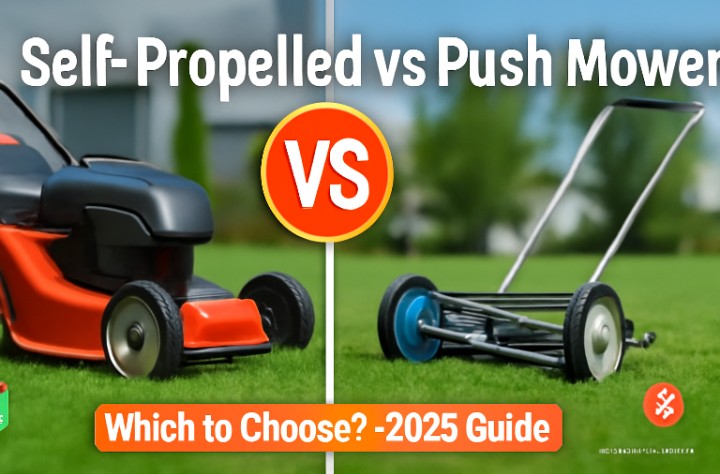You know what’s funny? Most people spend weeks researching the perfect grass for their lawn. Then they find perennial ryegrass and wonder why they didn’t start here.
This grass does not mess around. It gets going fast and looks good doing it.
Let me break down what you actually need to knowhno fluff, just real talk about whether this grass fits your situation.
WHAT MAKES RYEGRASS DIFFERENT?
Perennial ryegrass started its journey in Europe. The scientific crowd calls it Lolium perenne.
The blades have this glossy, dark green thing going on. Growth happens in bunches rather than spreading everywhere like crabgrass.
Now here’s something wild: seeds pop up in 3 to 7 days. I have literally watched it happen on my own property.
Your neighbor plants Kentucky bluegrass and waits forever. You are already mowing while they are still checking for sprouts.
The texture feels nice underfoot fine but not fragile. It’s that look you see at nice golf courses.
Kids running around? Dogs tearing up the yard? This grass handles it way better than you’d expect.
WHERE THIS GRASS ACTUALLY WORKS
Best Climate Zones
The Pacific Northwest treats perennial ryegrass like royalty. Oregon and Washington lawns look absolutely incredible with it.
British Columbia gets similar results. Northeast states New York, Massachusetts, Pennsylvania work beautifully too.
Midwest spots need reliable snow cover though. Michigan, Wisconsin, Minnesota usually fit that bill.
Snow basically tucks the grass in for winter. Without that blanket, brutal cold becomes a real problem.
Northern Europe plants this stuff everywhere. It’s pretty much their go-to for everything.
USDA zones 3 through 8 give you the best shot. Some newer types push into zone 9b without completely dying.
Temperature Sweet Spots
This grass likes moderate summers and cool winters best. Coastal areas nail that combination perfectly.
Growth really takes off between 60 and 75 degrees. That’s when you will notice the most action.
Cold tolerance drops down to negative 40 degrees. Snow makes that possible exposed grass does not fare as well.
Heat tolerance caps around 85 degrees for older varieties. Newer ones handle warmth a bit better.
Cool, moist summers make this grass ridiculously happy. Drought and blazing heat? Yeah, not its thing.
The Tricky In-Between Areas
Carolinas, Kentucky, Tennessee these spots sit in a tough zone. Perennial ryegrass works there but you will earn it.
Summer heat really beats on it in these regions. Expect to water more and watch it closer.
Some folks in these areas pull it off beautifully. Others eventually throw in the towel and try something else.
Arizona, Texas, Florida, Southern California play a different game. They only use it for temporary winter color.
Bermudagrass goes brown and sleeps when cold shows up. Perennial ryegrass fills in until spring heat wakes everything back up.
HOW PEOPLE ACTUALLY USE IT
Regular Home Lawns
Northern homeowners plant this for permanent coverage all year. The look stays professional without hiring a grounds crew.
Those fancy striping patterns? Super easy to create. Just mow back and forth in different directions.
At ExLandscaper, we have put this in yards across tons of different areas. Matching grass to your actual climate matters more than anything else.
Nobody wants to fight their lawn every single week. Pick something that naturally likes where you live.
Sports Fields and Pro Facilities
Wimbledon made the switch to 100% perennial ryegrass in 2001. Those courts get absolutely hammered during tournaments.
Wembley Stadium runs with perennial ryegrass blends. Professional soccer, football, baseball they all use it constantly.
Golf courses cover fairways and tees with it. Divots fill back reasonably fast compared to other options.
Dense growth gives athletes solid footing. Traction quality ranks really high for competitive stuff.
Farming Operations
Northern Europe and New Zealand grow mountains of this for pasture. Cattle get solid nutrition from it.
Yields hit over 4 tons per acre typically. The nutrition profile keeps milk production strong in dairy operations.
Livestock work with both continuous and rotational grazing. Just let grass reach 8 to 12 inches before turning animals loose.
Erosion Control Work
Quick establishment helps on torn-up sites. Roadsides, banks, construction zones benefit from fast coverage.
Roots grab soil and hold it down. This stops washout while other plants get their footing.
GETTING THE TIMING RIGHT
Fall Gives You the Best Results
Late summer through early fall sets you up for success. Northern properties should shoot for mid-August through mid-September.
Transition zone spots need slightly later timing. Mid-September to early October works better there.
Aim for about 45 days before frost usually hits. Grass needs time building roots before winter arrives.
Cool temps reduce stress on baby plants. Weeds are not fighting as hard in fall either.
The grass builds serious roots during fall months. Spring shows up and growth just goes crazy.
Spring Works as Backup
March through May gives you another shot. Wait for soil hitting 50 to 65 degrees consistently.
Spring planting faces tougher challenges though. Weeds wake up hungry and compete hard for everything.
Summer stress lands before grass fully establishes. Fall stays my top pick whenever timing allows it.
Southern Overseeding Schedule
Mid-August to early September suits overseeding best. Watch for nighttime temps dropping to 65 or 70 degrees.
Bermudagrass starts its nap around that point. Timing lets ryegrass get established before hard freezes hit.
The temporary grass dies off naturally late spring. Your permanent warm-season stuff takes back over when heat cranks up.
ACTUALLY STARTING YOUR LAWN
Getting Soil Ready
Grab a soil test six months ahead if you can. This shows exactly what your dirt actually needs.
Till everything down 4 to 6 inches deep. Pull every weed, rock, and random piece of garbage out.
Make the surface smooth and firm before dropping seeds. Throw in whatever your soil test said to add.
Good prep work changes your whole outcome. Skip this part and you will get patchy, disappointing results.
Seed Amounts That Work
New lawns want 8 to 10 pounds per thousand square feet. Overseeding existing grass needs 6 to 9 pounds per thousand square feet.
Drop seeds about a quarter to half inch down. Make sure they are actually touching soil, not just sitting on top.
Grab a real seed spreader for even coverage. Tossing by hand creates bare spots everywhere.
The Sod Route
Sod gives you instant green. Thickness runs 1 to 2 inches usually.
Water right after laying it down. This keeps edges from drying out and croaking.
Sod costs way more upfront but skips the waiting game. Think about your budget and timeline when deciding.
Mixing Different Grasses
Kentucky bluegrass works great with perennial ryegrass. The ryegrass pops fast while bluegrass slowly patches gaps.
Fine fescues throw shade tolerance into the mix. Tall fescue adds toughness in tricky transition areas.
Mixed lawns grab each species’ best features. One type covers where another falls short.
KEEPING IT ALIVE AND HEALTHY
Watering That Works
New seed wants frequent light drinks. Hit it 3 to 5 times daily for the first week and a half.
Established grass needs 1 to 1.5 inches each week. Deep, less frequent watering builds tougher roots.
Early morning watering wins every time. This timing cuts down disease problems big time.
Summer dormancy shows up without enough moisture. This grass drinks more than some other cool-season types.
Cutting It Right
Keep height between 1.5 and 3 inches for home yards. Two to three inches handles most situations perfectly.
Never hack off more than one-third at once. This stops shock and unnecessary stress.
Sharp blades make clean cuts. Dull ones tear grass and invite disease in.
Bump height to 3 or 4 inches during summer heat. The grass grows fast so you will mow often.
Sports fields stay lower at 1 to 2 inches. Athletic stuff demands that shorter height.
Feeding Schedule
Annual nitrogen runs 2 to 4 pounds per thousand square feet. Use starter food when planting new seed.
Regular feeding uses balanced stuff like 18-1-8. Hit it mainly in fall during active growth.
Early spring feeding gives another boost. Feed every 4 to 8 weeks throughout growing season.
Perennial ryegrass eats more than some alternatives. Cheap out on food and you will get thin, weak grass.
Soil Maintenance
Test soil yearly or at least every 3 to 4 years. Results point you toward what actually needs adding.
Aerate when soil gets packed down from traffic. This grass rarely needs dethatching because of how it grows.
Fix pH using lime or sulfur based on test numbers. Sweet spot lands between 6.0 and 7.5.
PROBLEMS YOU WILL PROBABLY FACE
Disease Stuff
Brown patch pops up in hot, sticky weather. Gray leaf spot hits during muggy summers too.
Dollar spot usually means you are low on nitrogen. Leaf spot shows up in cool, wet spring conditions.
Pythium blight loves soaking wet situations. Rust gets especially bad on ryegrass when humidity hangs around.
Crown rust commonly smacks this species. Red thread occasionally makes an appearance too.
Stopping Disease Early
Right mowing height cuts disease pressure way down. Don’t overwater and create perfect conditions for nasty stuff.
Morning watering lets grass dry fast. Balanced feeding makes plants stronger against infection.
Endophyte-enhanced types fight diseases better naturally. Good airflow helps keep blades dry.
Grab disease-resistant varieties whenever possible. Stopping problems beats scrambling to fix them later.
Bug Issues
Armyworms can wreck lawns incredibly fast. Chinch bugs suck plant juice and leave brown dead spots.
Billbugs mess up grass by chewing stems. White grubs eat roots under the soil.
Cutworms slice through blades at night. All these bugs need watching and managing.
Dealing With Pests
Check your property regularly for warning signs. Keep grass dense and healthy as your main defense.
Beneficial nematodes give you biological control options. Endophyte-enhanced varieties naturally kick out lots of insects.
Save bug sprays as absolute last resort. Chemicals hammer beneficial bugs too.
THE GOOD AND BAD STUFF
What Really Works
Germination and establishment happen lightning quick. Traffic tolerance crushes most other cool-season choices.
Cold tolerance works fine with snow protection. Wear recovery happens fast after damage.
That dark green color looks really sharp. Sports fields get beautiful striping with this species.
Forage quality ranks high for livestock. Modern varieties fight diseases pretty effectively.
Seed mixes establish quickly thanks to rapid germination. These perks explain why everyone uses it.
The Downsides
Drought tolerance falls below other cool-season picks. Less cold-hardy than Kentucky bluegrass without snow cover.
Maintenance needs run higher than some alternatives. Bunch-type growth means no self-repair through spreading.
Hot, sticky climates create problems. Regular reseeding might become necessary eventually.
Summer dieback happens in extreme heat. Water and food demands beat several other species.
CHOOSING YOUR VARIETY
Turf Type Versus Forage Type
Turf-type varieties belong on lawns and sports fields. Forage-type varieties belong in pastures.
Never grab VNS products labeled “Variety Not Stated.” Quality work demands named, tested varieties with known track records.
Diploid and Tetraploid Stuff
Diploid varieties carry two chromosome sets. They have got finer texture and more delicate looks.
Tetraploid varieties pack four chromosome sets. Wider leaves and better winter toughness come with these.
Both categories have excellent modern varieties. Your specific situation determines the best pick.
Endophyte Technology
Beneficial fungal endophytes actually live inside the grass. They give natural defense against tons of insects.
Stress tolerance jumps way up with endophytes present. Heat and drought resistance improve noticeably.
Skip endophyte varieties for livestock pastures. High endophyte levels hurt grazing animals badly.
Turf applications benefit hugely from this technology. Natural pest resistance drops chemical use dramatically.
Regional Picks That Work
Manhattan and Zoom crush it across Northeast spots. Cold tolerance and disease resistance make them dependable.
Blazer handles Midwest conditions beautifully. Wear tolerance and winter toughness suit that climate perfectly.
Revenge GLX offers better heat tolerance for transition areas. Pacific Northwest does well with Pangea GLR near coasts.
Manhattan works inland throughout the Pacific Northwest. Always check with local extension offices for current suggestions.
FIXING COMMON PROBLEMS
Summer Stress
Pour on irrigation during hot spells. Raise cutting height to 3 or 4 inches for extra protection.
Recovery from summer dormancy takes real time. Adjust watering to meet increased summer demands.
Consider extra irrigation if your area stays blazing. The grass pays you back with continued growth.
Winter Damage
Winterkill happens without adequate snow blanket. Ice can trash exposed grass in vulnerable spots.
Fall fertilization builds winter toughness effectively. Grab cold-hardy varieties for northern properties.
Protection from harsh winter winds helps survival. Consider adding windbreaks if your site lacks natural cover.
Poor Long-Term Success
Transition zones often face persistence challenges. How hard you work largely determines success or failure there.
Regular overseeding might become needed as years roll by. Mixing with tougher species improves overall staying power.
Proper feeding and consistent watering stop premature decline. Don’t expect miracles in marginal climate zones.
Heavy Disease Hits
High humidity cranks fungal disease risk way up. Fungicide applications sometimes become necessary for control.
Resistant varieties drastically cut problem frequency. Cultural practices stay absolutely essential for long-term success.
Healthy grass fights disease better than stressed stuff. Focus energy on prevention rather than reacting to problems.
THE END
Perennial ryegrass really shines in the right spots. Cool climates with decent moisture suit it perfectly.
Northern lawns, sports fields, and pastures benefit most. Southern overseeding delivers excellent winter color temporarily.
Quick establishment and gorgeous looks justify the popularity. Traffic tolerance makes it perfect for active households.
Think hard about your climate, maintenance ability, and what you actually need. Match the grass to your real situation for best results.
Right variety selection dramatically improves success. Don’t hesitate asking local experts for specific help.
Your property deserves grass that naturally thrives there. Perennial ryegrass might be exactly what you have been hunting for.






